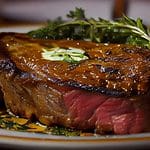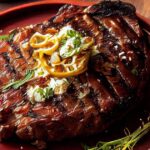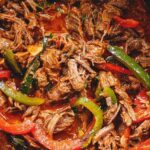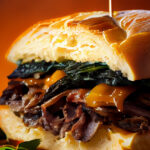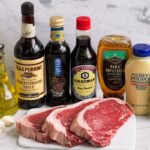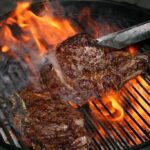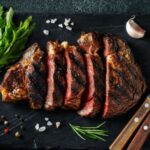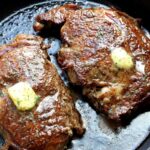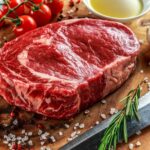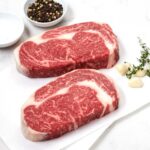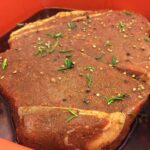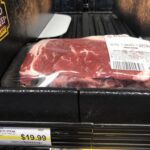How to Cut Ribeye Steak (Long Guide for the Perfect Steak)
Are you a fan of juicy, flavorful ribeye steak, but unsure of how to choose, prepare, and slice it to perfection? Look no further! In this expert guide, we’ll walk you through all the tips and techniques you need to know to create the perfect ribeye experience. From choosing the best cuts at the grocery store or local butcher, to cooking and slicing techniques that bring out the best in your steak, we’ve got you covered. So fire up your grill or cast iron skillet and get ready to impress your taste buds and dinner guests with your ribeye mastery. Let’s get started!
Understanding Ribeye Cuts: A Guide to the Different Types of Ribeye Steaks
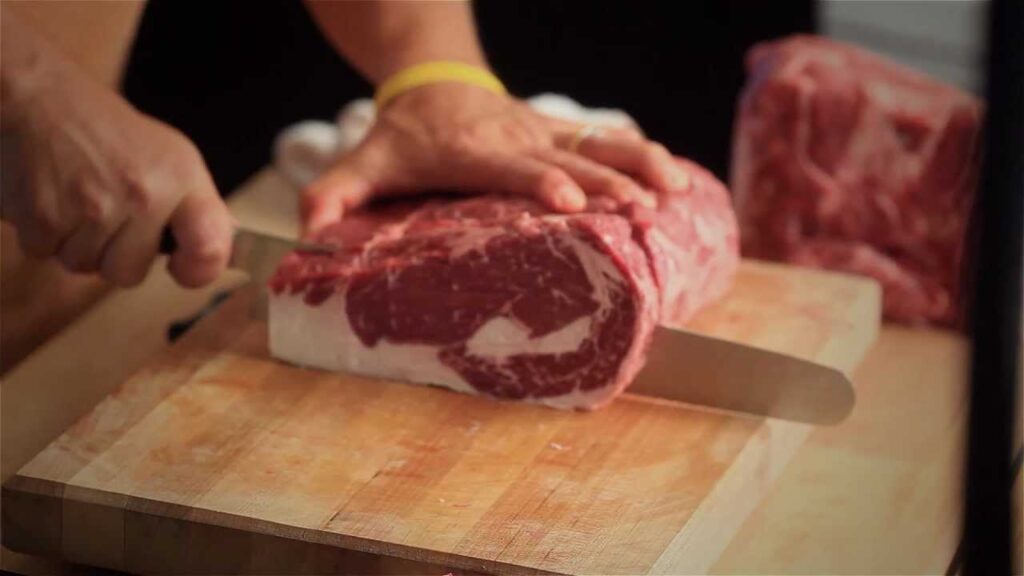
When it comes to steak, ribeye cuts are some of the most sought-after and flavorful cuts of beef. There are several different types of ribeye cuts, ranging from bone-in ribeye steaks to boneless ribeye steaks, ribeye cap and even individual steaks. Understanding the differences between these cuts can help you make the best decision when it comes to purchasing steak. In this blog, we’ll be taking a closer look at the different types of ribeye cuts and exploring their unique characteristics.
Bone-in ribeye steaks are one of the most popular types of ribeye cuts. These steaks are generally larger cuts, with a nice marbling of fat throughout the steak. The bone-in ribeye steak is one of the most flavorful steaks you can purchase, as the fat adds extra flavor to the meat. Additionally, the bone-in ribeye steaks tend to be more tender than boneless cuts.
Boneless ribeye steaks are another popular cut of ribeye that is often used for grilling or pan-searing. These steaks tend to be leaner than their bone-in counterparts, but they still have a nice marbling of fat throughout. Boneless ribeye steaks are great for cooking quickly, as they don’t require as much time as bone-in steaks.
Ribeye cap is another popular cut of ribeye. This cut is very tender and is generally sold as individual steaks. The ribeye cap is cut from the top of the ribeye and is composed of the longissimus dorsi and the spinalis dorsi muscles. The muscles in the ribeye cap are long muscle fibers that are separate from the rest of the ribeye and are some of the most tender parts of the steak.
New York strips and strip steaks are also types of ribeye cuts. These steaks are cut from the short loin primal cut and are composed of the longissimus dorsi muscle. Strip steaks are known for their bold flavor and are generally more tender than other cuts. Additionally, strip steaks are great for grilling and pan-searing.
Tenderloin steaks and top sirloin steaks are also ribeye cuts. These steaks are cut from the tenderloin primal cut and are composed of the longissimus dorsi muscle. Tenderloin steaks are one of the most tender cuts of beef, and they’re great for grilling or pan-searing. Top sirloin steaks are also very tender and flavorful, and they’re great for grilling.
Finally, the T-bone steak is a type of ribeye cut. This steak is cut from the short loin primal cut and is composed of the longissimus dorsi and the spinalis dorsi muscles. The T-bone steak is one of the most flavorful steaks you can purchase, as it has two different types of meat in one steak. Additionally, the T-bone steak has a nice marbling of fat throughout, which adds flavor to the steak.
When it comes to ribeye cuts, there are many different types to choose from. Each cut has its own unique characteristics and flavor profile, so it’s important to understand the differences between them. Ribeye steaks are generally very tender and have a nice marbling of fat throughout, which adds flavor to the steak. Additionally, the grain of the steak will vary depending on the cut, with the narrow end being more tender and the thin end being more flavorful.
Another important factor to consider when purchasing ribeye steaks is the fat cap. Some steaks will have a layer of fat on the outside, which is known as the fat cap. The fat cap can add flavor to the steak, but can also add excess fat, so it’s important to trim off any excess fat before cooking.
Overall, ribeye cuts are some of the most beautiful and flavorful steaks you can purchase. Understanding the different types of ribeye cuts can help you make the best decision when it comes to purchasing steak. From bone-in ribeye steaks to boneless ribeye steaks, ribeye cap and even individual steaks, there are many different types of ribeye cuts to choose from. So, the next time you’re looking to purchase steak, be sure to consider the different types of ribeye cuts and choose the one that best suits your needs.
The Ribeye Cap: A Delicious and Tender Cut of Meat
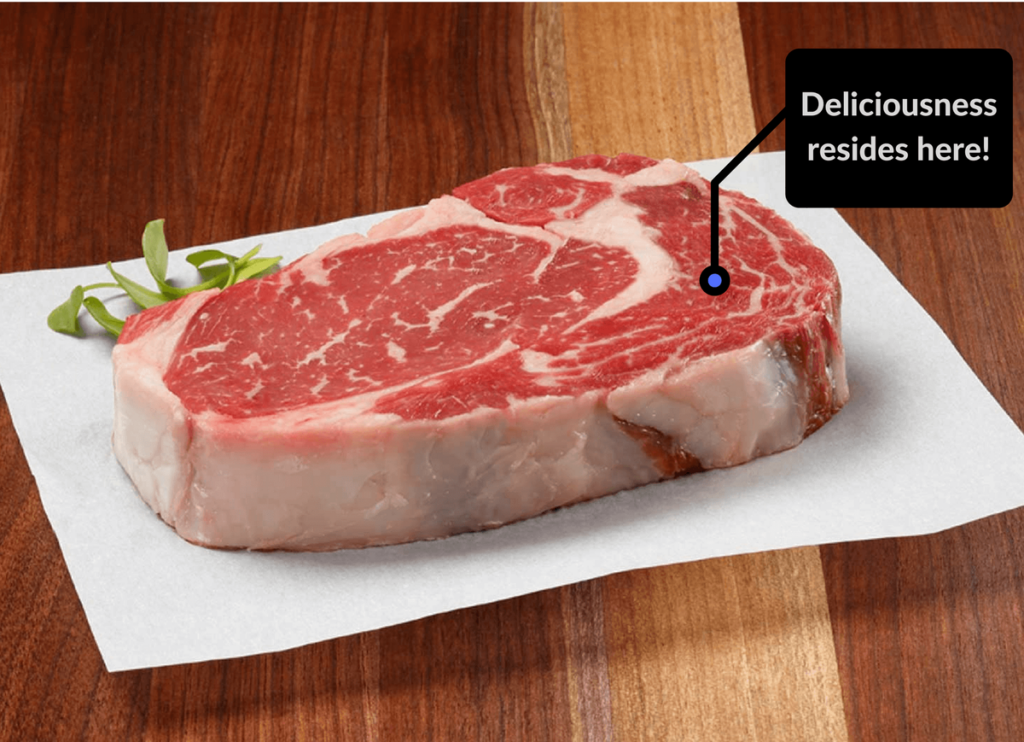
The ribeye cap, also known as the spinalis dorsi, is a primal cut of beef that is immensely popular for its tenderness and flavor. It is the upper portion of the ribeye muscle, and is made up of several separate muscles bound together by a thin layer of fat. This cut of meat is highly sought after by steak lovers, as it offers large chunks of fat and big, beefy flavor.
The ribeye cap is considered one of the most beautiful steaks available, due to its marbling of fat throughout the muscle. This fat adds flavor and tenderness to the steak, while also helping to keep the steak moist during cooking. The fat also adds color to the steak, giving it a beautiful, deep brown color that is sure to impress your guests.
When purchasing a ribeye cap, it is important to note that there is a thin end and a fat end. The fat end is thicker, with a layer of fat that can be trimmed away if desired. The thin end is thinner and contains more of the grain of the steak, and it is this portion that is typically served.
When preparing a ribeye cap, it is important to retain as much of the fat as possible. This fat helps to keep the steak moist while cooking, and adds additional flavor to the steak. If there is excess fat that needs to be trimmed away, it is recommended to use a sharp knife to carefully cut away any fat cap, leaving the muscle intact.
The ribeye cap is a delicious and tender cut of meat that is sure to impress your guests. With its large chunks of fat and big beefy flavor, it is sure to be a hit at any gathering. Whether you choose to serve it with a classic steakhouse preparation or as part of a unique dish, the ribeye cap is sure to be a crowd pleaser.
Boneless Ribeye Steaks: Tips for Cooking and Slicing these Delicious Cuts
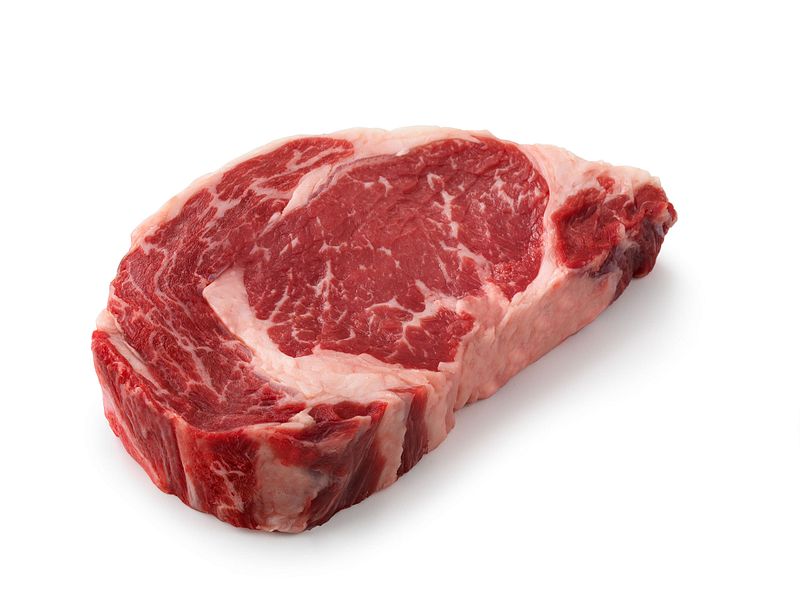
When it comes to steak, boneless ribeye steaks are some of the most delicious and tender cuts of beef. Whether you’re grilling individual steaks or larger cuts, these steaks are sure to be a hit. Boneless ribeye steaks are also known as New York strips, strip steak, or tenderloin steak. They are cut from the top sirloin and are considered a primal cut of beef.
The boneless ribeye steak is made up of the longissimus dorsi muscle. This muscle is made up of long muscle fibers and when cooked, the steak will be tender, juicy and full of flavor. The steak is made up of several separate muscles that are held together with a grain. The grain runs from the narrow end to the thin end.
When it comes to cooking boneless ribeye steaks, there are a few tips that can help you get the most out of your steaks. Be sure to allow the steaks to come to room temperature before cooking them. This will ensure that the steaks are evenly cooked and that they reach the desired doneness. You will also want to be sure to sear the steaks on both sides to get a nice crisp crust.
When it comes to slicing the steaks, there are a few tips that can help you get the most out of this delicious cut of beef. Be sure to slice against the grain of the steak so that the steaks are more tender. You will also want to be sure to trim off any excess fat from the steaks. The fat that is left will help to enhance the flavor of the steaks.
If you’re looking for a truly delicious steak, boneless ribeye steaks are the way to go. They are full of flavor and tenderness. Whether you’re grilling individual steaks or larger cuts, these steaks are sure to be a hit. Just be sure to follow the tips above for cooking and slicing these beauty steaks and you won’t be disappointed. Enjoy!
Bone-In Ribeye Steaks: How to Slice these Delicious Cuts?
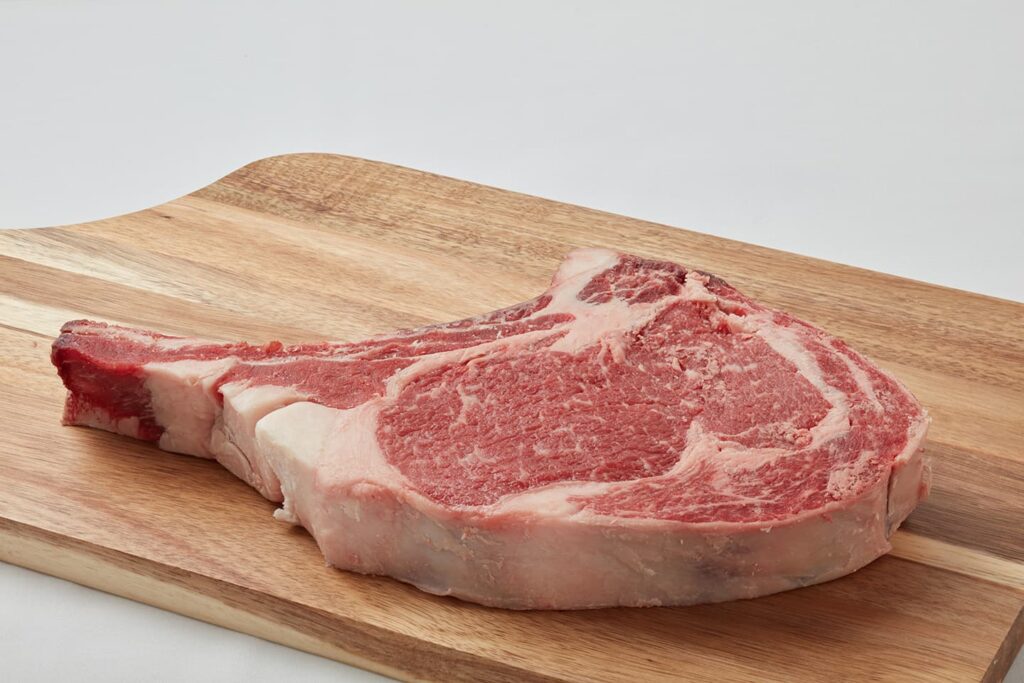
Bone-in ribeye cuts are some of the most flavorful and delicious options. This cut of steak is a favorite among steak lovers for its rich flavor, tenderness, and juicy texture. Whether you’re looking to cook individual steaks, larger cuts for a dinner party, or even for a whole rib roast, you’ll find that bone-in ribeye steaks are the perfect choice.
The bone-in ribeye is actually a combination of two cuts of steak: the New York strip and the tenderloin. It’s a primal cut, meaning it’s taken from the rib bones of a cow and contains both the longissimus dorsi muscle and the spinalis dorsi muscle. The longissimus dorsi muscle is a long muscle that runs along the spine of the cow, and is the source of tender steak cuts. The spinalis dorsi muscle is a short, thick muscle that lies beneath the longissimus dorsi muscle and is the source of steaks with a bit more chew.
When you’re cooking bone-in ribeye steaks, you’ll want to look for steaks with the rib bones still attached. This helps keep the steak moist and flavorful during cooking. As you cut the steaks, you’ll want to keep the grain of the steak in mind. The grain runs in one direction, from the narrow end to the thin end. Make sure you’re slicing across the grain, as this will help keep the steak tender.
If you’re looking for beauty steaks, you’ll want to look for steaks with big chunks of fat. The fat cap helps keep the steak juicy and flavorful. If you’re looking for a leaner steak, you may want to trim off any excess fat. A layer of fat around the steak can help keep the steak moist during cooking, even if it’s removed before serving.
Whether you’re cooking bone-in ribeye steaks or looking to make a whole rib roast, these tips will help you get the most out of your steak. From selecting the right cut to slicing it properly, you’ll be sure to enjoy every delicious bite.
Other Delicious Cuts: Tomahawk Steaks, Cowboy Steaks, and More
If you’re a fan of ribeye steak, you should consider trying some other delicious cuts, like tomahawk steaks, cowboy steaks, and more.
A tomahawk steak is a large cut of ribeye steak that has a long bone with the meat attached. The bone is usually about 6 to 8 inches long and is known as a “Frenched” bone because of the way it is cut. The steak itself is tender and juicy, with a rich flavor that comes from the fat cap that runs along the top.
A cowboy steak is a large cut of ribeye steak that is also known as a New York strip or a strip steak. It’s a long steak with a strip of fat running along the top, making it very tender and flavorful. This cut is usually served with the bone still attached, making it look like a traditional steak.
If you’re looking for a more tender cut, you should consider a tenderloin steak. This is the most tender cut of the ribeye and is usually served as a smaller steak. The tenderloin steak is usually cut from the top sirloin, which is the most tender part of the ribeye.
Finally, if you’re looking for something a bit more impressive, you should consider a t-bone steak. This cut is made from both the longissimus dorsi muscle and the spinalis dorsi, which are both long muscle fibers that run along the spine. This cut is very tender and flavorful and is often served with the bone still attached.
No matter which cut of ribeye you choose, you’ll be sure to impress your guests. These steaks are all delicious and full of flavor, with long muscle fibers that make them tender and juicy. Plus, they all have a unique texture because of the grain of the steak, which runs from the narrow end to the thin end.
For an even more impressive presentation, you can also choose “beauty steaks,” which are large chunks of ribeye steak with big chunks of fat running through them. The fat cap adds flavor and juiciness to the steak, but be sure to trim off any excess fat before serving.
So, if you’re looking for something special for your next steak night, consider trying one of these delicious cuts of ribeye steak. You won’t be disappointed!
Choosing the Best Ribeye at the Grocery Store or Local Butcher
The first thing to consider when choosing a ribeye steak is the cut of beef. There are a few different types of ribeye steaks to choose from, including rib bones, whole rib roast, standing rib roast, and ribeye cuts. Rib bones are the least expensive cut of ribeye, and they’re great for slow-cooking. Whole rib roasts are usually more expensive, but they’re great for special occasions. Standing rib roasts are expensive, but they’re a great choice for a large group. Ribeye cuts are the most common type of ribeye steak, and they’re great for quick meals.
Once you’ve chosen the right cut of beef, it’s important to look for the best ribeye steak. The best ribeye steak will have a nice marbling of fat, which adds flavor and moisture to the steak. It should also be free of any bruises or discoloration. When you’re shopping at the grocery store or local butcher, make sure to ask the butcher for their favorite cut of ribeye steak. They’ll be able to point you in the right direction and will be able to tell you which cut is the best for your particular needs.
Once you’ve chosen the best ribeye steak, it’s important to know how to cook it properly. Ribeye steaks are best cooked on a hot grill, but they can also be cooked in a skillet or in the oven. If you’re cooking on the grill, make sure to preheat the grill before you start cooking and make sure to season the steak with salt and pepper before cooking.
If you’re cooking in a skillet, make sure to use a generous amount of oil or butter to ensure that the steak doesn’t stick to the pan. If you’re cooking in the oven, make sure to preheat the oven to the proper temperature and use a thermometer to ensure that the steak is cooked to your desired temperature.
No matter what cut of ribeye steak you choose, it’s important to remember that the best ribeye steak is the one that tastes the best to you. Expensive cuts may look better, but cheaper cuts can be just as good if they’re cooked properly. So, don’t be afraid to experiment and find the cut and cooking method that works best for you. Once you find the perfect ribeye steak, you’ll be sure to enjoy a delicious meal every time.
Preparing the Ribeye: Techniques for Cooking the Perfect Steak
Cooking a ribeye steak to perfection is an art form. It takes a keen eye, a sharp knife, and a well-chosen heat source to create a mouthwatering experience. However, it’s not as hard as it may seem. With the right tools and techniques, you can turn your ribeye steak into the talk of the town.
Let’s start by talking about the cooking process. The best way to cook a ribeye steak is in a cast iron skillet using a combination of high temperature, indirect heat, and room temperature. This combination of low, medium, and high heat will ensure that the steak is cooked evenly and to your desired doneness.
Once your skillet is heated up, add some olive oil and a pinch of freshly ground black pepper. Once the skillet is hot, place the steak in the center and let it cook for several minutes. Flip the steak over and let it sear on the other side.
To ensure your steak reaches the perfect temperature, use a meat thermometer. This will help you get the perfect internal temperature for your steak. A digital thermometer makes it easy to track the temperature of the steak.
Once the steak has reached your desired temperature, remove it from the heat and let it rest on a cutting board. This will allow the steak to cool down and allow the juices to redistribute throughout the steak.
Another technique to try is the reverse sear method. This is where you cook the steak indirectly over low heat for an extended period of time. After the steak has been cooked to your desired temperature, you can then finish it off with a few minutes of high-heat searing. This will give you a delicious, juicy steak with a nice, crispy crust.
To ensure that you have the perfect steak, make sure to have the right tools on hand. A good chef’s knife, a boning knife, and a meat thermometer are essential for getting the perfect steak. A sharp knife is key for slicing the steak into the perfect thickness, and a meat thermometer will help you get the perfect internal temperature.
With the right tools and techniques, you can create the perfect ribeye steak. Whether you’re using the traditional cooking method or the reverse sear method, you’ll be sure to impress your guests with your culinary skills. So, grab your cast iron skillet, a sharp knife, and a meat thermometer and get cooking. Bon appetit!
How to Cut Ribeye Steak: Slicing into Delicious Cuts
Nothing beats a perfectly cooked steak, but getting the perfect cut can be tricky. If you’re looking for the best way to slice your filet mignon or ribeye, you’ve come to the right place. We have all the tips and tricks you need to cut your steak like a pro.
When it comes to cutting steaks, the first thing to consider is whether the cut is bone-in or boneless. Bone-in steaks, like individual steaks or larger cuts like a New York strip or a tenderloin steak, are usually easier to cut as the bone helps hold the steak together. Boneless cuts, like top sirloin or T-bone steak, can be more challenging.
The next thing to consider is the type of steak. If it’s a whole rib roast, the best way to cut it is by following the grain of the steak, which will look like long muscle fibers running from the narrow end to the thin end. This will ensure your slices are even and aesthetically pleasing. If you’re cutting individual steaks, you’ll want to make sure you’re cutting perpendicular to the grain of the steak.
When it comes to beauty steaks, like ribeye, you’ll want to be careful to avoid cutting into the big chunks of fat. This fat cap will help to keep the steak moist and juicy, so it’s important to leave it in place. That said, you’ll want to trim off any excess fat that is covering the steak, as this can prevent the steak from cooking evenly.
Finally, you’ll want to make sure you’re keeping an eye on the internal temperature of your steak. The best way to do this is to use a meat thermometer, as it will allow you to monitor the steak’s temperature as you cook it. Once the steak reaches its final temperature, it’s ready to be enjoyed.
By following these tips, you’ll be able to cut the perfect steak and enjoy it in all its juicy, delicious glory. So grab your cutting board and get to slicing – your steak is waiting!
The Reverse Sear Method: A Delicious and Efficient Way to Cook Ribeye Steaks
Cooking a ribeye steak is a simple yet deliciously satisfying task, and the reverse sear method makes it even easier. The reverse sear method is an efficient and delicious way to cook a ribeye steak that produces amazing results.
The reverse sear method begins by cooking the steak at a high temperature. This allows the surface of the steak to form a delicious crust while keeping the internal temperature lower. Once the steak has been cooked to the desired internal temperature, it is then seared in a hot skillet or on a hot grill to give it a crispy, flavorful outer layer.
The reverse sear method is an excellent way to cook ribeye steaks because it ensures that the steak is cooked perfectly. By slowly bringing the steak to the desired internal temperature, the steak remains juicy and tender. It also ensures that the steak does not overcook, as the surface of the steak will not become too charred or burnt.
The reverse sear method also gives the steak a unique flavor. By searing the steak at a high temperature, the steak develops a delicious and flavorful crust. Furthermore, the high temperature helps to caramelize the steak’s surface, giving it a delicious and succulent flavor.
The reverse sear method is an incredibly easy and efficient way to cook a ribeye steak. All that is needed is a thermometer, a skillet or grill, and a ribeye steak. Start by preheating the oven to approximately 300 degrees Fahrenheit and placing the ribeye steak in the oven.
Once the steak has reached the desired internal temperature, remove the steak and place it in a hot skillet or on a hot grill. Sear the steak for about two minutes per side, or until the surface of the steak is crispy and golden brown. Finally, enjoy your perfectly cooked ribeye steak!
The reverse sear method is an easy, efficient, and delicious way to cook ribeye steaks. By using the reverse sear method, you can guarantee a juicy and tender steak with a delicious, flavorful crust. Try the reverse sear method today and enjoy a delicious and perfectly cooked ribeye steak.
Final Thoughts: Enjoying the Perfect Ribeye Steak
Whether it’s a traditional ribeye, a cowboy cut steak, or something else, there are several techniques and tips to ensure you get the most delicious cut of steak possible.
The main factor to consider when cooking a ribeye steak is the cooking process. Different cuts require different approaches to ensure the meat cooks evenly and your taste buds are tantalized. Before you cook your steak, it’s helpful to know your favorite cut and the best methods for cooking it.
For a tender cut, like a traditional ribeye, you’ll want to use high heat. This will help the steak to cook quickly and evenly, resulting in a juicy, flavorful steak. For smaller cuts, like the cowboy cut steak, you can use a combination of high, direct heat and low, indirect heat. This will help the steak to cook evenly, ensuring a juicy steak.
For larger cuts, like an entire ribeye or rib roast, it’s best to use low, indirect heat. This will help the steak to cook evenly without drying out. It’s also important to make sure the steak is at room temperature before cooking.
Finally, when you’re ready to cook your steak, it’s important to remember that different parts of the animal are used for different purposes. For example, the ribeye is a great cut for grilling, while the rib roast is better suited for roasting. When placing steaks on the grill or in the oven, make sure to place them on the grill or in the oven at the halfway point of your desired cooking time. This will ensure that the steak will cook evenly.
No matter what cut you choose, following these tips will help you enjoy the perfect ribeye steak. Enjoy!
More Ribeye Steak Recipes and Resource
A Simple Recipe Using Rib Eye Steak
Sizzle and Satisfy: A Delicious BBQ Rib Eye Steak Recipe for Any Occasion
5-Star Crockpot Ribeye Steak Recipe: A Slow-Cooked Sensation
Ribeye Steak Sandwich Recipe: A Delicious Twist on a Classic Dish
The Perfect Thin Ribeye Steak Recipe: A Step-by-Step Guide
Best Way To Cook A Ribeye Steak on The Grill
How to Cook a Ribeye Steak Without a Cast Iron Skillet
How to Cook a Ribeye Steak in a Cast Iron Skillet for Perfect Results Every Time
How to Cook Bison Ribeye Steak: The Ultimate Guide
How To Cook Wagyu Ribeye Steak (Easy Than You Think)
How Long To Marinate Ribeye Steak? (for Perfect Juicy, Flavorful Results)
How to Tenderize Ribeye Steak for Maximum Flavor: Expert Tips and Techniques
How Much is a Ribeye Steak? (Let’s Find The Best Deals)
This article is a part of The Ultimate Steak Cookbook, our ever-growing mini encyclopedia on techniques for delicious steak recipes. Please bookmark and return. There will be a lot of useful information for you.

Shara @The Bird BBQ
Shara loves to experiment with different flavors and techniques when it comes to BBQ. She has been perfecting her craft for years and loves hosting backyard BBQs with friends & family. She often comes up with creative recipes that her guests rave about.

